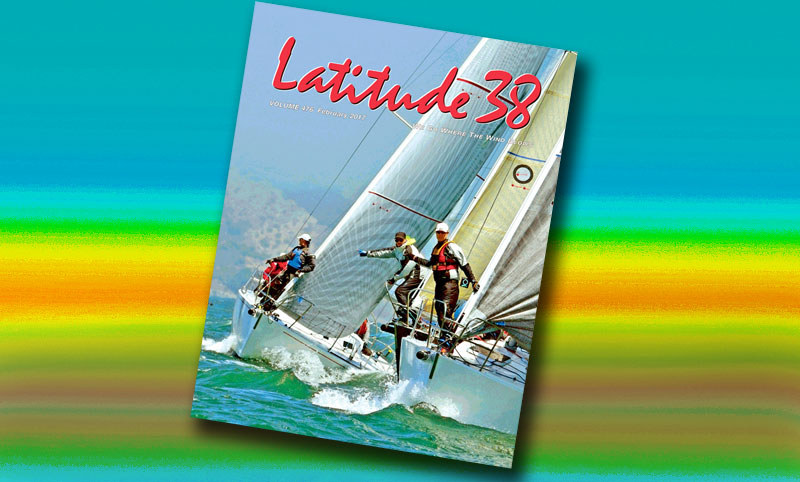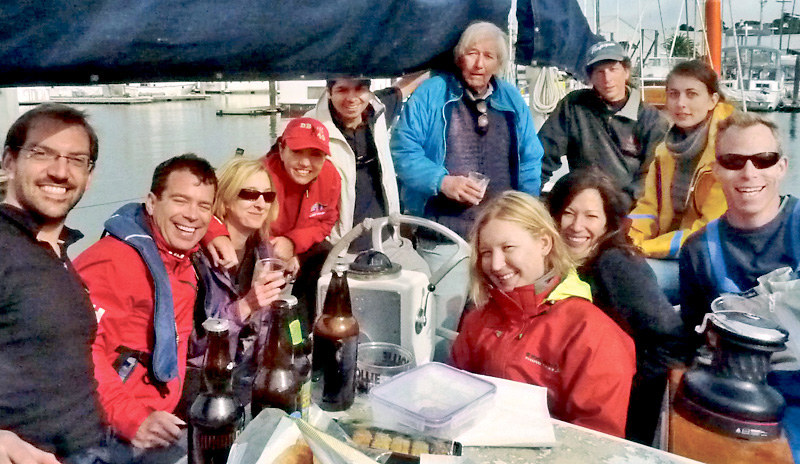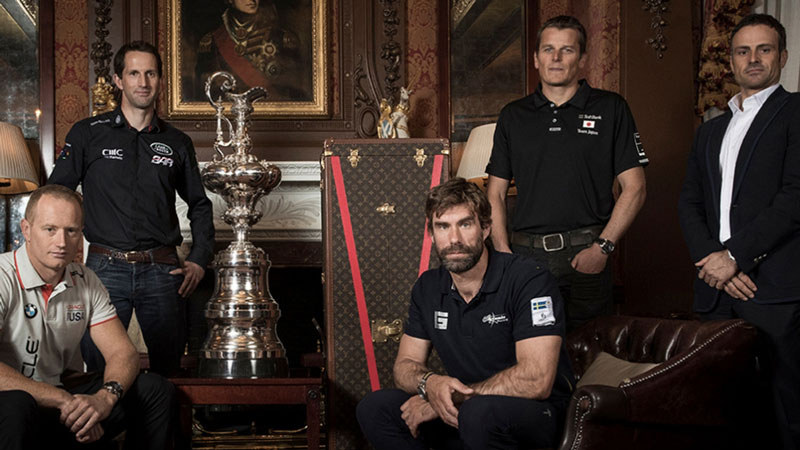
February Issue Hits the Docks
The flip of the calendar from January to February brings with it the February issue of Latitude 38, making its way around Bay Area docks today in advance of the next swarm of rainstorms. As always, it has also been mailed to subscribers and shipped to distributors throughout North America. It will also be posted online.

©Latitude 38 Media, LLC
Within its pages you’ll find the return of our Boat of the Month feature, this time delving into the J/105 mystique. Reader response for How I Learned to Sail was so enthusiastic that we’ve split it into two parts, the first running this month. Next, we meet the French-American Screve family — the parents are cruisers while the sons are championship racers.
Sightings items include three round-the-world records broken, visits to Moore Sailboats and Berkeley Marine Center to view work in progress, info about April’s Pacific Sail and Power Boat Show and March 8’s Latitude 38 Crew List Party, and stories about jumping the Pacific Puddle and liveaboards racing to Clipper Cove.
In a collision of old and new technologies, Max Ebb learns how to use a digital camera as a sextant. Racing Sheet takes on the Rolex Sydney Hobart, various Bay Area midwinters and a SoCal tradition. World of Charter examines the Wonders of Windjamming in Downeast Maine and Caribbean regattas for bareboaters. Calendar, Letters, Changes in Latitudes, Classy Classifieds and display advertising round out the issue — but wait! There’s more! February marks the return of our Loose Lips column.
So now, when the rain comes, at least you have some reading material.
Latitude’s Free Crew-Recruiting Tool
While revving up to celebrate Latitude 38 magazine‘s 40th anniversary this spring, we’ve been reflecting on many past adventures of West Coast sailors, as well as unique Latitude offerings such as our long-established Crew List — which aims to connect potential crew with skippers in need. We are proud to say our Crew List, now free, online and updated 24/7, has linked up hundreds if not thousands of sailors and skippers for daysailing, local racing, offshore racing and world cruising.
Ever since our first Crew List Party was staged in 1980, those twice-per-year events have served to cement relationships between skippers and potential crew. Make note that the next one will take place five weeks from now, Wednesday, March 8 at San Francisco’s Golden Gate YC (6-9 p.m.).
How well does the Crew Party work? While reviewing past issues we came across this letter from Sylvia Stompe, who recently returned from a two-year Pacific cruise aboard their Hughes 48 Iolani with her husband Barry. Prior to leaving, they connected with seven crew who, as Sylvia recently told us, "are now friends for life."

©2017Latitude 38 Media, LLC
"The 2012 Latitude Crew Party … yielded a great bunch of race crew recruits. Seven of the sailors in this photo are contacts we made at the Crew Party. Four of them just moved to the Bay Area — and are learning that we sail with PFDs and foulies. So thanks to Latitude for hosting the great event.
"The photo was taken after a good day of spinnaker practice, which was followed by an awesome potluck lunch behind Angel Island, featuring many homemade treats. After a brisk sail back to Sausalito, we hosted a little dock party and beer-tasting of some microbrew created by one of our crew. The Chipotle Amber Ale was voted the favorite."
If you’ve had a memorable Crew List experience, we’d love to hear about it. Write us here.
America’s Cup Agreement

The five skippers shown in the above photo represent the teams that signed the new ‘Framework Agreement’ for the next two editions of the America’s Cup. But wait — aren’t there six teams? Who’s missing? Conspicuous by its absence is Emirates Team New Zealand.
Richard Gladwell, the New Zealand-based editor of Sail-World, wrote in a LinkedIn discussion group that the Framework’s "major flaw is that the DoG [Deed of Gift] is about Clubs being entered in the Cup with responsibilities under the DoG. The Framework is geared around teams not Clubs. The Defender is the Club charged with organising the event and underwriting the cost of that. Whether the Defending Club/Trustee will be happy about its liability and responsibilities being in the hands of a Committee in which they have no right of approval/veto is another matter. Also the 2019 venue is at the call of the 2017 winner, but under the Framework the venue has to be ready inside two years, which given that it has taken 4-5 years each time there has been a change of venue in the past seems to be a big ask. The convenient option would seem for it to stay in Bermuda."
With Oracle Team USA defending the America’s Cup 35 in Bermuda, more than a continent away from its associated club, San Francisco’s Golden Gate Yacht Club, it’s already about the teams, not the clubs. Was the above agreement presented at GGYC in S.F.? Nope, London, during a press conference at the House of Garrard, where the America’s Cup trophy was crafted in 1848.
The framework agreement and agreed future protocol binds the signatories to deliver AC36 and AC37 under the following terms:
- The America’s Cup will be on a two-yearly cycle for AC36 (2019) and AC37 (2021).
- The America’s Cup World Series (ACWS) will start, at the election of the defender, as soon as Q4 2017. Venues, sponsors and media partners will be approached over the next six months to secure up to 12 international events over the next two years.
- The first year of the ACWS will be raced in AC45F foiling catamarans – the same boats used in ACWS in the 35th America’s Cup.
- The second year will see a transition to the America’s Cup Class (ACC) boats, the same technically sophisticated class of boats raced in Bermuda in 2017 (with a slight rule modification to extend the wind range in which they can race to 4-26 knots). After this transition to the America’s Cup Class (ACC), the AC45Fs will be retired from the America’s Cup competition and the ACC boats will be the only boats raced.
- The America’s Cup World Series (ACWS) will culminate with a final event at the venue for the next America’s Cup and the final standings from the America’s Cup World Series (ACWS) will be used to qualify teams for the America’s Cup Challenger Playoffs.
- The America’s Cup Challenger Finals and America’s Cup Match will be held in 2019 in a venue selected by the winner of the 35th America’s Cup.
- To reduce costs, teams will not be permitted to build, test or train on AC45 surrogate boats as they have in this cycle of the America’s Cup.
- This above will repeat for AC37, with the exception that all racing will take place in America’s Cup Class (ACC) boats.
Larry Ellison, founder of the America’s Cup Defender, Oracle Team USA, said, "People who want to enter this race now know how much it will cost, what kind of boat they need to build, and that the rules can’t change on them. They are now able to plan ahead, build a boat, build a team, and come out and compete for their country." But what happens if the Kiwis win AC35?
